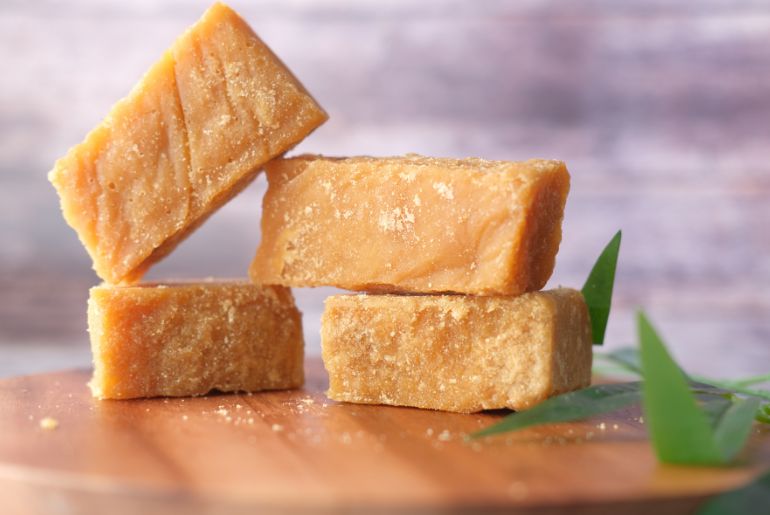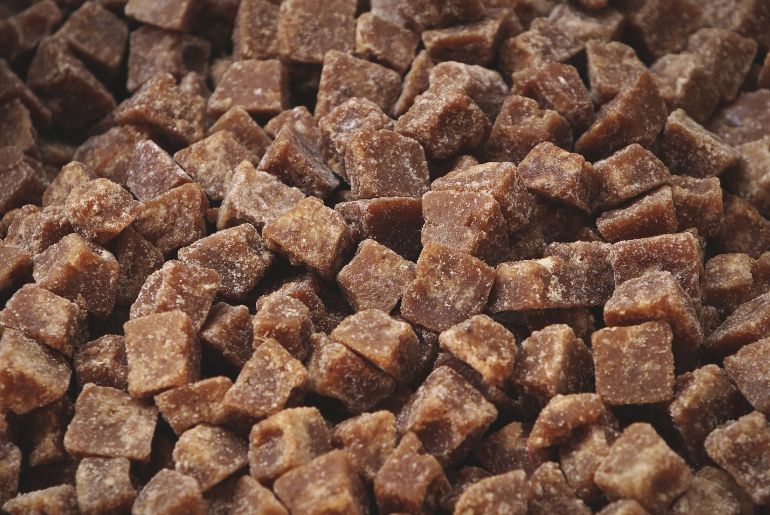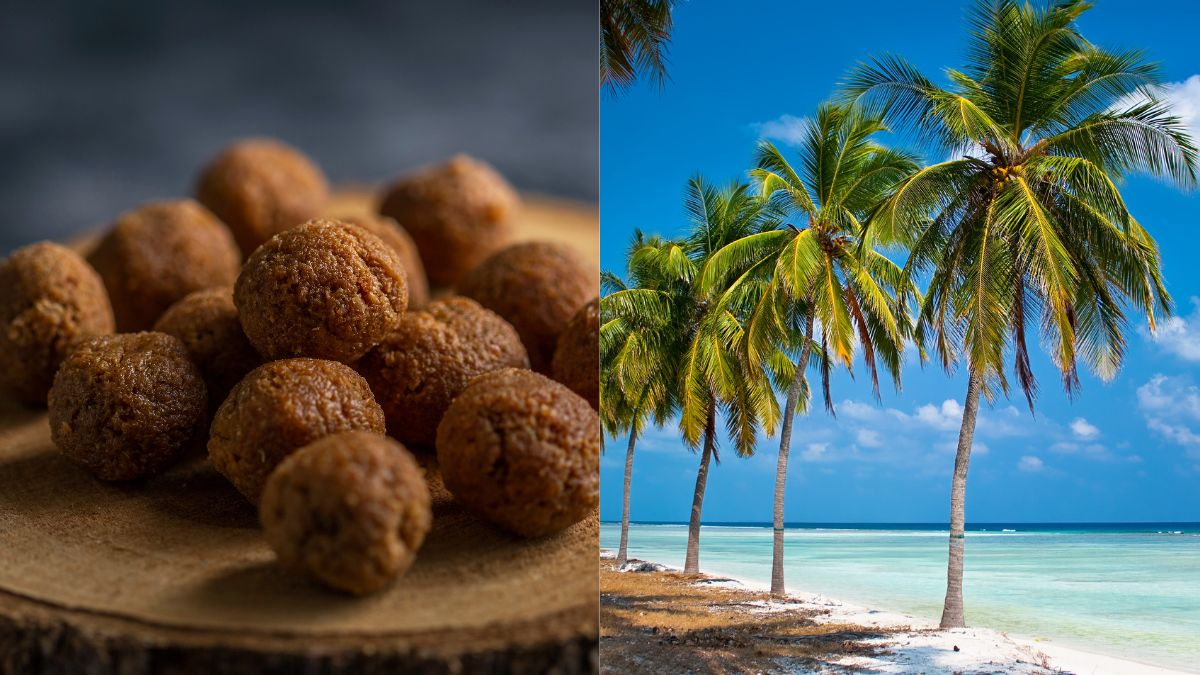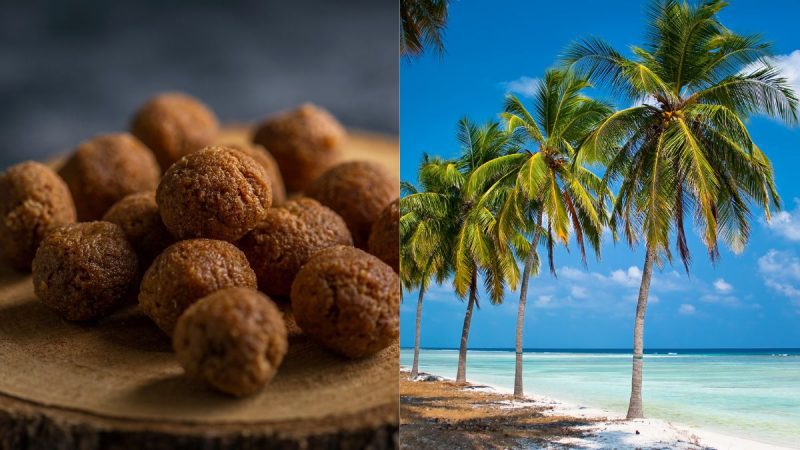Amidst the palm-fringed shores and coral reefs of Lakshadweep Islands, there exists a culinary treasure, coconut jaggery. This ingredient is significantly more costly, even though all of its preparation takes place on land.
Lakshadweep’s Coconut Jaggery

One of the most renowned aspects of Lakshadweep’s culinary legacy is the coconut jaggery. However, the highly sought-after jaggery is produced via the arduous process of extracting coconut sap and boiling it for hours. This is an essential ingredient in regional desserts like Lakshadweep Halwa. Just 2.5 kg of jaggery, which can sell for up to Rs 1,000 per kg, is produced from thirty litres of coconut sap. Pre-booking is important due to the high demand, which is evidence of its esteem among both residents and tourists. It is also marketed as a diabetic-friendly substitute.
This golden-brown delicacy undergoes a meticulous process of extraction and refinement, resulting in a product that exudes the essence of tropical paradise. The process begins with a golden-coloured liquid within a jar containing two coral stones. The liquid is the coconut tree’s sap, which is painstakingly removed. This liquid is continually cooked for more than four hours, resulting in a jelly-like substance that is called coconut jaggery. The sweet jaggery is extracted from the sap by using the coral stones to eliminate its sourness. The resulting coconut jaggery is a symphony of flavours, with notes of toasted caramel, nutty undertones, and a hint of earthiness that speaks of its natural origins.
Also Read: Lakshadweep & Other Islands To Get Infra Boost & Port Connectivity: FM In Budget 2024
It’s Usage In Dishes

Beyond its mastery in confections, coconut jaggery finds application as a spread or sweetener and is exceptionally shelf-life-extending when refrigerated. The handmade care that goes into the product is evident in the careful procurement of coral stones, which are crucial for counteracting the acidity of sap.
The people living on the island think that adding jaggery to tea or other sweet treats is healthy for diabetics. Additionally, this jaggery can be used as a sweetener for snacks and as a spread for bread. The islanders advise against refrigerating this product due to its extended shelf life. The resulting coconut jaggery’s texture is dense and velvety, melting on the tongue to release a burst of sweetness that is both indulgent and wholesome.
So, have you ever tasted this unique coconut jaggery?
Cover image credits: Canva (representational)
First Published: February 12, 2024 6:12 PM




